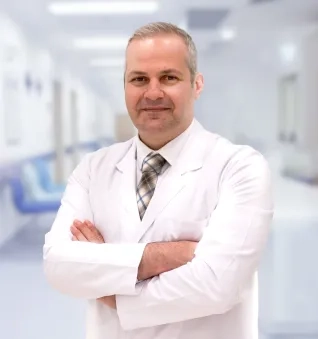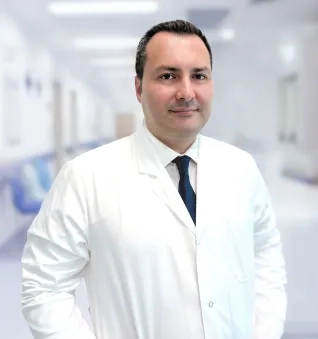Alo Yeditepe
Alo Yeditepe
Don't Underestimate Bone Pain That Doesn't Make You Sleep and Doesn't Relieve With Medication
Bone pains are discomforts that occur to every person once or a few times in their lives and are often ignored. Yeditepe University Hospitals Orthopedics and Traumatology Specialists, who warn to be more careful about pain that increases especially in children and young adults, does not go away with rest or taking medication, and wakes them up at night, also emphasized that these pains can be confused with growing pains and therefore diagnosis may be delayed.
Malignant bone cancers, which start in the cells that form the bone and are called "osteosarcoma" in medical terms, are mostly seen between the ages of 10-14 and after the age of 65. Pointing out that these malignant tumors, which are seen in the part where the femur and tibia form the knee joint, are often seen during the growth period, Yeditepe University Koşuyolu Hospital Orthopedics and Traumatology specialists added that for this reason, the pains can be confused with growth pains and this may cause a delay in diagnosis.
Experts stated that early diagnosis, appropriate treatment and regular follow-up are very important for osteosarcoma, which is a tumor with a very aggressive course, and added: "It is necessary to consult a physician without wasting time in these pains that develop without any trauma, usually affect the same area, and do not go away with rest or taking medication."They said.
Rare But Aggressive
Reminding that osteosarcoma is rarer than other tumors, experts said, “It accounts for 0.2 to 1 percent of all cancers and 2.4 percent of childhood cancers. Its incidence is 4-6 per million per year. Although it is rare, osteosarcoma has an aggressive course and a high tendency to metastasize. On the other hand, 20-25 percent of patients have radiologically detectable metastases. It most commonly metastasizes to the lungs (80%). “The second most common place of metastasis is other bone areas.”
Genetic Predisposition is Important
Although the factors in the formation of osteosarcoma are not yet clearly known, some major risk factors are thought to be linked to the disease. Experts said that defined genetic factors are among the risk factors and continued as follows: “It has been revealed that retinablastoma and p53 tumor suppressor genes are effective in the formation of osteosarcoma. Additionally, the risk of osteosarcoma increases in Li-Fraumeni, Rothmund Thomson, Bloom and Werner syndromes. "In addition, factors such as Page disease, chondrosarcoma and previous radiotherapy, especially in secondary osteosarcoma, may also cause the development of osteosarcoma."
‘’Bone Tumors May Not Cause Symptoms Until They Reach a Noticeable Size’’
Pointing out that gender, race and ethnicity differences are also important risk factors in addition to genetic factors, experts emphasized that osteosarcoma is 1.5 times more common in men than in women, and that it is more common in black/brunette races than in white races.
Yeditepe University Koşuyolu Hospital Orthopedics and Traumatology specialists stated that the tumors seen in the bones are mostly benign and since they do not cause any symptoms, they can often be detected incidentally in x-rays, MRIs or tomography examinations taken for other reasons. "The diagnosis of osteosarcoma is made by evaluating the patient's clinical history, physical examination and necessary radiological tests. X-rays are primarily evaluated as a radiological examination. X-rays are very useful for diagnosis. In addition, contrast-enhanced MRI examination, including the entire bone, is necessary to evaluate the spread of the tumor, its relations with the surrounding soft tissue, vascular and nerve structures, and to evaluate whether there are skip metastases (spread to different regions within the same bone) and "Thorax tomography and whole body bone scan are performed to determine whether there is lung spread," They said.
Satisfying Results Can Be Obtained in Treatment in Recent Years
Underlining that great advances have been made in the treatment of osteosarcoma in recent years, experts said, "After examining the necessary tests and confirming the diagnosis with biopsy, the treatment is evaluated in tumor councils where orthopedic oncology, oncology, radiology, radiation oncology and pathology departments come together with multidisciplinary work."
Experts point out that the treatment is carried out in a three-stage method: pre-surgical chemotherapy, surgery and post-surgical chemotherapy, and limb-sparing surgical treatment can be applied in this way. Limb preservation rates after preoperative chemotherapy are over 90%. The cancer is removed in one piece, with a certain amount of clean tissue around it, without any tumor tissue being seen and without entering the tumor, including the biopsy method previously performed. The resulting defect is reconstructed with biological and non-biological methods as a result of tumor localization and evaluation of the patient. They concluded their words by saying, "Thus, 5-10 year survival rates in patients receiving combined chemotherapy before and after surgery have reached satisfactory rates compared to the past."
This content was prepared by Yeditepe University Hospitals Medical Editorial Board.
”
See Also
- What are Hip Joint Diseases? Causes and Treatment
- Robotic Hip Replacement Surgery
- Things to Consider When Walking in Snowy Weather
- What is Hallux Rigidus (Stiff Big Toe/Toe Arthritis)? Symptoms and Treatment
- What is Hallux Valgus (Bunion)? How is it Treated?
- What is a Bone Tumor? Bone Tumor Symptoms
- What is Crooked Leg? Can Crooked Legs Be Treated?
- Knee Pain
- Wrist Pain Causes and Treatment
- Ergonomics in Automobiles Prevents Accidents
- What Causes Hip Pain? How Does Hip Pain Go Away?
- What is a Stress Fracture? How to Treat Stress Fracture?
- Biopsy for Bone and Soft Tissue Tumors
Alo Yeditepe




